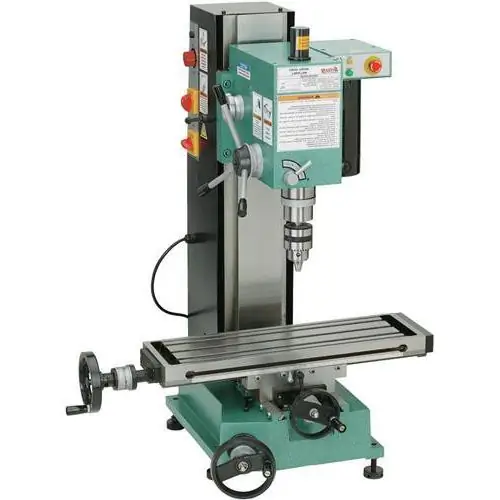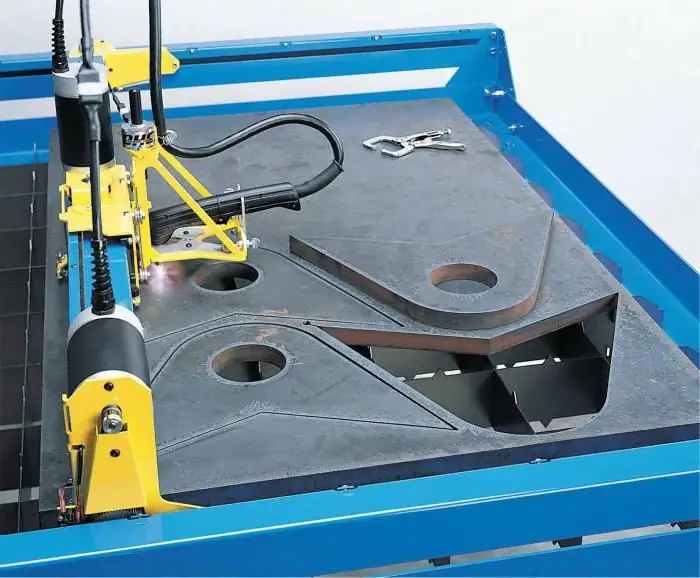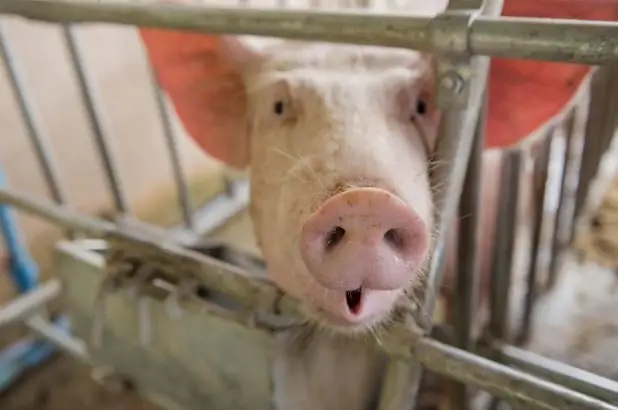2025 Author: Howard Calhoun | [email protected]. Last modified: 2025-01-24 13:10:31
Not every person who has brought a pig to the slaughter knows how to butcher a pig carcass. This is a very dirty and unpleasant job, so even the theoretical study of the issue is constantly postponed "for later." However, once you still have to discard disgust and study this issue in as much detail as possible. The better one knows the theory, the less problems will arise in practice.
Types of cutting
To begin with, it is worth telling how cutting and deboning of pork carcasses is performed in different countries. Not everyone knows that many countries have their own methods for carrying out this work, depending on which types of meat are more valued in a particular area.

The most popular are four types of cutting:
- Russian,
- German,
- English,
- American.
Each of them has certain nuances - some are more difficult in practice, but they allow you to separate the meat into groups, depending on the price category. Others, on the contrary, are easier to learn and use, but at the same time do not allow you to achieve the desired effect.
ThereforeLet's briefly talk about each of these cuts.
Russian cutting
First of all, let's talk about the Russian cutting of pork carcasses (see photo below). It is she who is most popular throughout the post-Soviet space.

The pork carcass is neatly divided into eight main parts.
- First of all, this is the back hams - excellent meat that can be minced, used as a fillet or smoked, getting smoked hams - perhaps one of the most delicious ways to prepare this part.
- The next piece is the back or cutlet part. This includes the spine and the group of muscles in its immediate vicinity. Relatively tender, juicy and soft.
- Zasheina is, according to experts, the best sort of meat in pork carcasses and, accordingly, the most expensive. The main advantage is tenderness - a pig cannot lift its head, as everyone knows. Therefore, this muscle group almost never strains and is highly valued by gourmets. The same can be said about the tenderloin in the pork carcass, it is located near the spine in the lumbar region. She also does not tense up while alive, which keeps her gentle.
- The neck, cheeks and head may be considered waste, but it is from them that an experienced chef will prepare many delicious dishes.
- The shoulder or shoulder blade is generally a versatile meat that can be cooked in a variety of ways: fry, boil, stew, smoke or barbecue.
- The breast part is usually used for frying - as inwhole cuts of meat, and for the preparation of chopped meatballs, beef stroganoff and other dishes.
- The middle part of the legs - front and back - is also known as the shank. Usually used for cooking - the broths from it are excellent. But this meat is also suitable for smoking, although in this case it will be a little dry and harsh. Some experts recommend baking them whole, seasoning them with various spices.
- Legs are the usual raw material for making the most rich and delicious aspic.
As you can see, the correct cutting of a pork carcass is a real science, which cannot be quickly learned. However, patience, knowledge of theory and a little practice work wonders!

German cut
This version of the processing of pork carcasses is only slightly easier. Here the meat is also divided into eight parts, each of which belongs to a particular variety.
- Cutlet part and lumbar, together with back legs, belongs to the first grade.
- Second grade is brisket, fore ham and fore vertebrae.
- The entire abdominal area is considered to be the third grade.
- Finally, the fourth grade is the head, along with cheeks and ears, and legs. The list of dishes that can be prepared from them is not too long. Therefore, this meat belongs to the lowest price category.
American cut
An interesting feature of this system is that the pork carcass is first cut in half - along the spine, into two equal parts. And only afterof this, each half carcass is divided into six parts: shoulder blade, back along with fillet near the spine, ham, side, ham of the front leg, head.
The advantage of this system is its comparative simplicity. However, true gourmets believe that this system does not allow qualitatively dividing meat into appropriate groups according to varieties, unlike Russian and German.
English cut
Finally, the English cutting system is the easiest. First of all, because pork meat is not highly valued on the shores of foggy Albion - beef and lamb are preferred here. Therefore, over the carcass of the pigs do not rack their brains for too long.

It is simply cut into four parts: the head, the front (the front legs along with the shoulder), the middle (part of the spine, ribs and abdominal area) and the back (the hams with the shank).
Of course, we are not talking about the division of meat by grade.
What tools will you need
Before you start butchering and deboning pork carcasses, you need to stock up on the right tools - they determine how easy the job will be and how much time it will take to complete it.
Two very sharp knives - one with a short blade, about 7 centimeters, and the second with a longer one, at least 15 centimeters. The sharper they are, the easier it is to do the job and the lower the risk of injury (because you don’t have to put too much pressure on the knife). You will also need a chef's cleaver to cut through thin bones and cartilage. Finally, a special butcher's ax will come in handywith a wide blade or a hacksaw equipped with a blade with fine teeth - to cope with thick bones.
Preparing the carcass for cutting
If you have already received a clean, processed carcass, then this step can be skipped. Otherwise, you will have to do it yourself.
First of all, it is very important to drain the blood. The easiest way to do this is to cut the carotid artery and jugular vein. Ideally, this should be done when the animal is still alive, but unconscious - stunned by current or a blow from a sledgehammer. Then the beating heart will quickly drain most of the blood from the body. It can be used to make blood, give to dogs, or simply lowered into the ground in a place where a puddle does not interfere. If this is not done, then it will bake in the meat, and it will lose its attractiveness.
Immediately after this, the carcass is scorched - for this you can use a gas burner, a blowtorch, or simply cover it with straw and set it on fire. The next step is cleaning the skin from burnt bristles. This is done with a knife - the dirt is gently scraped off and at the same time washed with a rag with hot water.
Getting Started
When the preparatory work is completed, you can start cutting. It will be easier to work with it if the insides and skin have already been removed. Otherwise, be careful not to damage the intestines.

Usually, the first step is to dissect the abdominal cavity, through which the intestines are removed. The inside of the carcass is wiped with damp rags, but not washed - this will speed upthe process of spoiling meat.
Then the cutting begins. First of all, the head of the pig is separated. Cut off the neck. Then proceed to the removal of fat. The front legs are cut off at the joint and cut into a shoulder blade and a shank. The back is also cut off - the owner decides whether to chop it or not, depending on how he will cook it.
The final step is to separate the brisket and loin. The remaining skeleton, consisting of the spine and ribs, is usually chopped with an ax into pieces of suitable size.
Unusual Hungarian cut
An interesting variety of culinary cutting of pork carcasses is widely used in Hungary. Needless to say, the locals know a lot about good pork. The very fact that the two terms "meat" and "pork" sound the same in Hungarian speaks volumes. Therefore, although this method is rather unusual, every connoisseur should learn about it.

It is usually used in cases where the insides have not yet been removed from the carcass. The advantage of this Hungarian method is the fact that the insides remain intact. Such a nuisance will at least lead to contamination of the meat, and in the worst case (if the gallbladder bursts), part of the carcass will be spoiled.
To begin with, the head is cut off from the carcass laid on the back. With a long, sharp knife, you can easily sever the neck and gently sever the cartilage between the vertebrae.
The next step is to remove the hind legs. The flesh is carefully dissected and the bone is separated with a knife along the joint. Here, howalready mentioned, the divider must decide whether to leave them in their original form, only chopping off the lower part (for example, for cooking a ham) or cut into joints.
The front legs are removed in the same way. After that, only the carcass itself remains - even and neat, nothing here will interfere with further cutting.
The neck is carefully cut off - the best part of the meat, which should be immediately set aside - for sale at a higher price or for preparing the most delicious dishes.
Then you need to make an incision along the back - along the entire spine - and then two more parallel ones - on the sides. The fat is carefully cut and removed along with the skin. Exposed meat - cutlet section - is cut off and immediately removed. The skin is cut in the abdomen and also removed from the sides.
When this stage is over, there is only a chest filled with entrails, and a little skin on the stomach. It remains only to cut the ribs on both sides of the spine and remove it. And the chest opens easily, allowing you to sort the insides - what is for cooking (heart, kidneys, liver), and what is for disposal.
What is meat yield
It is quite common to hear the term meat yield. Installing it is pretty easy. To do this, you need to weigh twice before slaughter, and the second time after cutting. That is, the whole pig itself is weighed, and then the meat along with the bones, which can be sold or eaten.

Some experts believe that edible offal should also be weighed, inwhile others prefer to count only meat and bones.
Because of this, the standard for meat yield is quite different - from about 66 to 77 percent. But the owner of the carcass has the opportunity to independently decide which weighing system suits him best.
Conclusion
Our article is coming to an end. Now you are much better versed in such a difficult topic as cutting a pork carcass. We learned about different types of meat evaluation, as well as methods of separation. Surely this will come in handy in practice.
Recommended:
Pork deboning: types, technique, deboning rates and meat yield

After bleeding and cutting the carcasses into half carcasses, the pork is usually deboned at the food industry. This is the name given to the process of separating the meat from the bones. Deboning should only be carried out by qualified workers
Cutting up a pig at home

The main features of cutting and processing pigs at home. Auxiliary recommendations for the preparation and conduct of slaughter and further processing of pig carcasses
Cutting mode for milling. Types of cutters, calculation of cutting speed

One of the ways to finish materials is milling. It is used for processing metal and non-metal workpieces. The workflow is controlled by cutting data
Metal cutting machine. Plasma metal cutting machine

The article is devoted to the apparatus for cutting metal. The technology of plasma cutting, as well as the device and features of the equipment are considered
Pig anatomy. Similarities between human and pig DNA

Pig anatomy has been studied quite well by scientists. Animals are hardy and unpretentious. Both the cardiovascular and nervous, reproductive and other systems are well developed in piglets

